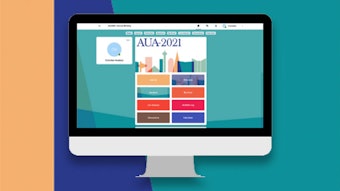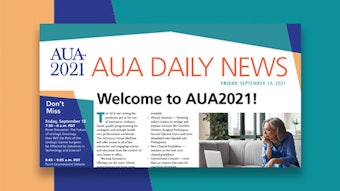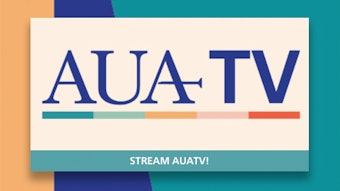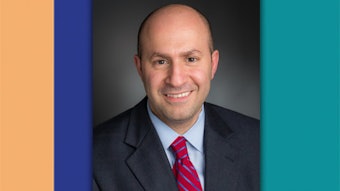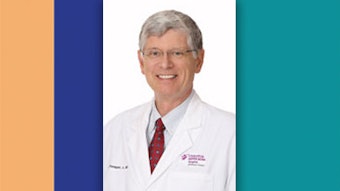Training models and techniques improve teaching tools
Remote and in-person learning expands educational opportunities.
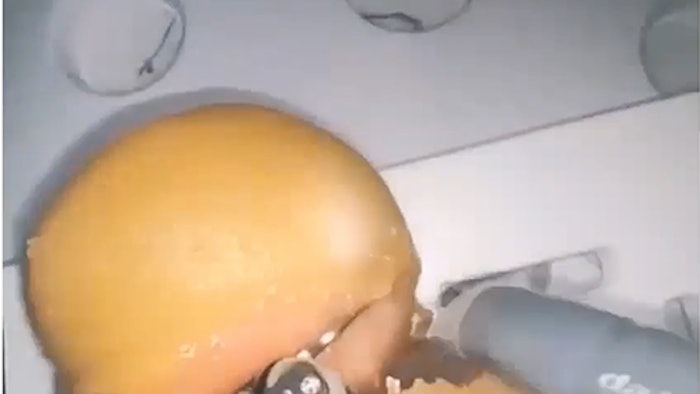
A novel physician skill level evaluation, realistic simulator for laparoscopic partial nephrectomy (LPN) and a more economic 3D model were just some of the tools on display during Friday morning’s virtual Education Research I poster session. The theme of the session focused on efficacy and practicality of both attendant and virtual educational mechanisms.
On the in-person front for educational tools, Runzhuo Ma, MD, coauthor of the “Development and Validation of an Objective Scoring Tool to Evaluate Surgical Dissection: Dissection Assessment for Robotic Technique (DART)” study, said an effective surgical competency assessment is needed to ensure a safe and efficient transfer of skills to training robotic surgeons.
“This project aimed to develop an objective scoring tool that comprehensively evaluates surgical dissection quality,” said Dr. Ma, who is a research fellow at the Center for Robotic Simulation and Education at the University of Southern California Institute of Urology in Los Angeles.
The two-phase study concluded that DART is an objective and reproducible three-point surgical assessment that effectively differentiates between levels of surgical experience.
In his presentation, “Multi-Institutional Validation of a New Kidney Model for Laparoscopic Nephron Sparing Surgical Training,” Maximiliano Daniel Ringa, MD, of the Hospital Aleman in Buenos Aires, said he and his coinvestigators recognized a realistic simulation of the LPN procedure was needed to cut down on the complications that beset surgeons as they learn the procedure.
The study was successful in validating an artificial training model for LPN, Ringa said.
“We have demonstrated face, reliability, content and construct validation for this novel model,’” he said. “Routine training on this type of simulator may (someday be a part of) standard residency curricula. This is a valuable educational tool that may serve to improve surgical skills, which are essential for safe and successful laparoscopic partial nephrectomies.”
Coauthor E. Reilly Scott and her team investigated using a simpler, less expensive 3D model to extend the use of these partial nephrectomy teaching tools to a greater number of patients and trainees.
“Cost-effective 3D models could become part of standard of care as learning tools to increase patient, resident and fellow understanding in robotic partial nephrectomies,” said Scott, who is a medical student at Sidney Kimmel Medical College, Thomas Jefferson University in Philadelphia. “Further research should continue to explore the utility of 3D models as a preoperative educational tool for both patients and trainees in other urologic procedures.”
On the virtual front for educational tools, coauthor Bristol B. Whiles, MD, a resident at KU Medical Center in Kansas, presented, “When virtual becomes reality: Development and implementation of a virtual urologic subinternship program for fourth year medical students.” Dr. Whiles said that although the COVID-19 pandemic disturbed the training of future physicians, it also inspired educators to get creative.
“The purpose of our study was to implement a virtual urologic surgery subinternship program and evaluate medical student impressions of the experience,” Dr. Whiles said. “We successfully implemented a two-week virtual urologic subinternship rotation with a wide variety of clinical and educational experiences. This is a unique experience in surgery that can easily be implemented by other urology or surgical subspecialty programs in the future.”
Wayne Brisbane, MD, coauthor of “Virtual Hands-on Training of Image-guided Urologic Procedures During the COVID-19 Pandemic,” said the pandemic forced his team to determine the value of using virtual training on inanimate models that closely replicate the prostate gland on ultrasound and MRI.
“This was the first demonstration of remote learning on a physical prostate phantom,” said Dr. Brisbane, who is assistant professor in the department of urology at the University of Florida in Gainesville. “The Covid-19 pandemic provided the opportunity to introduce a novel training approach. Expansion of this method to more complex procedures could substitute for teaching on live patients. Providing phantoms to instructors and attendees represents a future expansion of remote learning.”
Visit AUA2021 Daily News Online for more articles.

